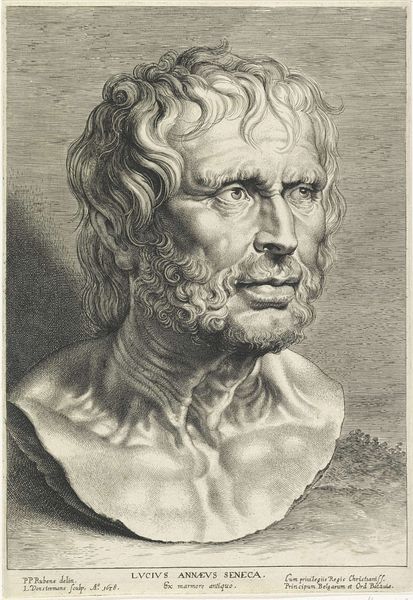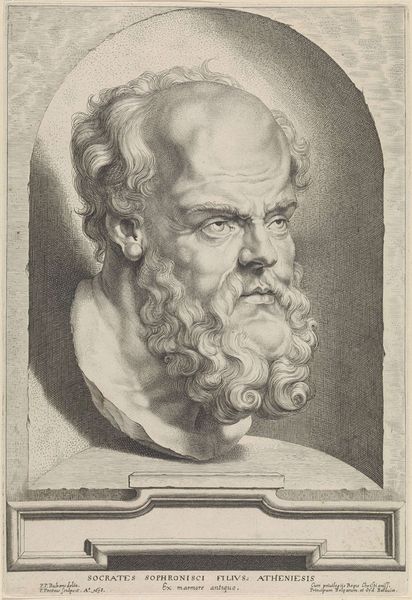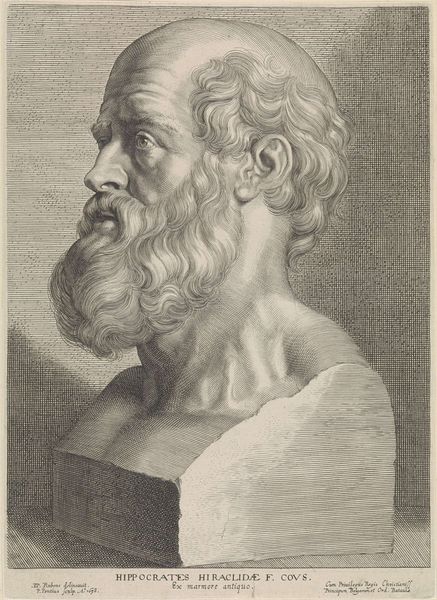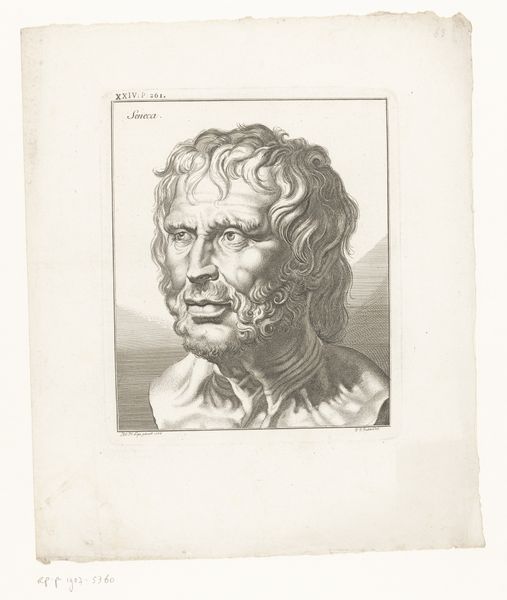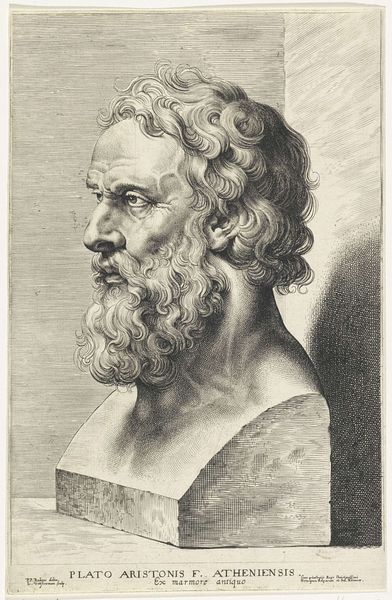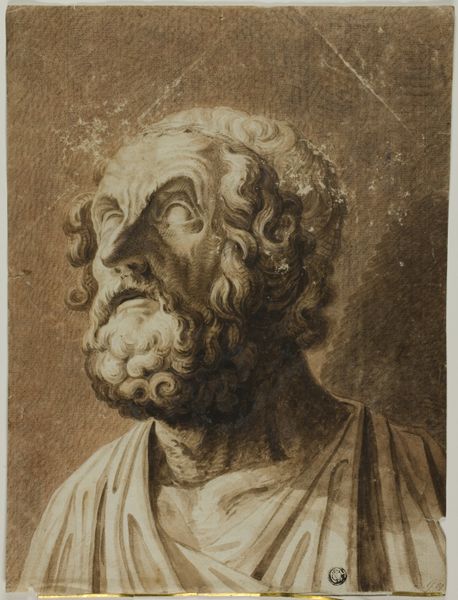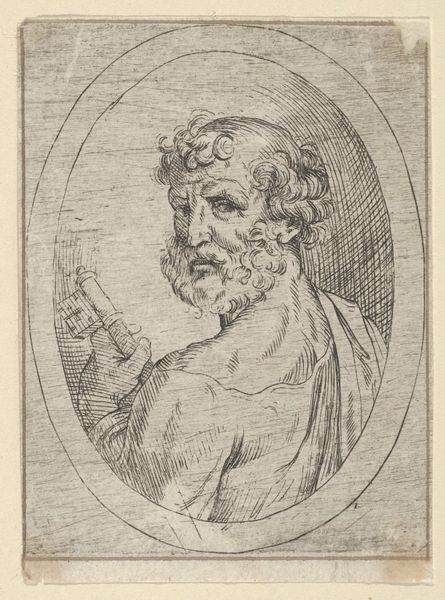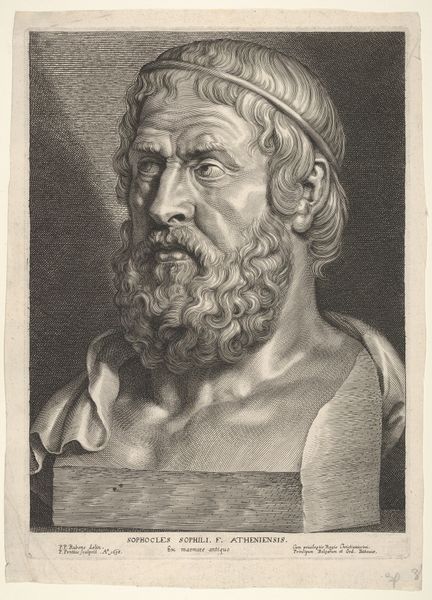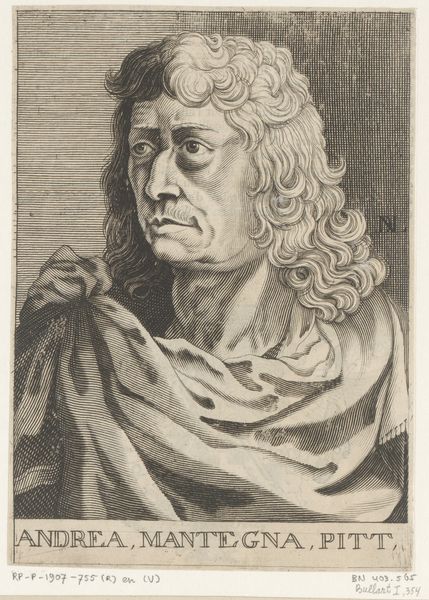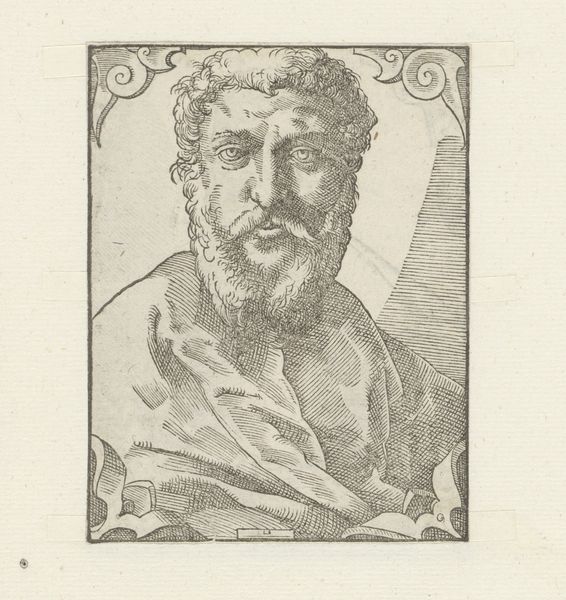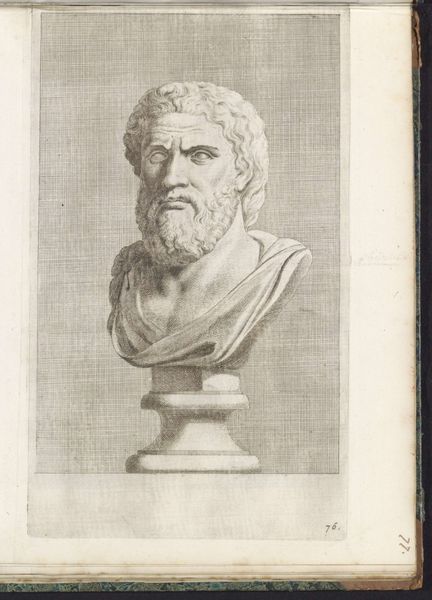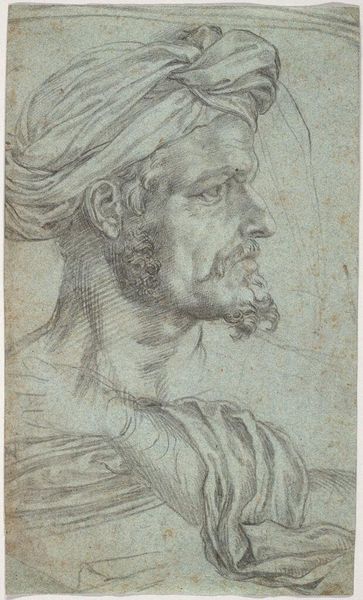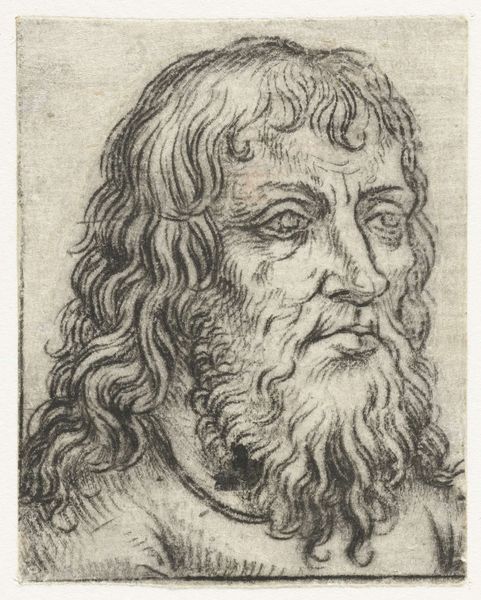
The bust of Seneca, in a stonework niche 1610 - 1620
0:00
0:00
print, engraving
#
baroque
# print
#
sculpture
#
history-painting
#
engraving
Dimensions: Sheet (Trimmed): 12 5/16 × 7 11/16 in. (31.2 × 19.5 cm)
Copyright: Public Domain
This is Cornelis Galle I’s engraving of Seneca, made in Antwerp sometime in the late 16th or early 17th century. It shows a bust of the Roman philosopher Seneca set in a stone niche. Prints such as this played an important role in the circulation of classical knowledge in Northern Europe. Galle’s print depicts Seneca as a severe, intellectual figure, based on antique busts. The lettering identifies him as a figure of authority. His texts, rediscovered during the Renaissance, offered a guide to virtuous behavior, something of great interest to political and intellectual elites at the time. Galle’s print would have been collected and displayed in libraries as a symbol of learning and wisdom. In understanding this image, we can look to sources such as emblem books and biographies that circulated at the time. By understanding its social context, we can better appreciate the role of art in shaping cultural values.
Comments
No comments
Be the first to comment and join the conversation on the ultimate creative platform.
